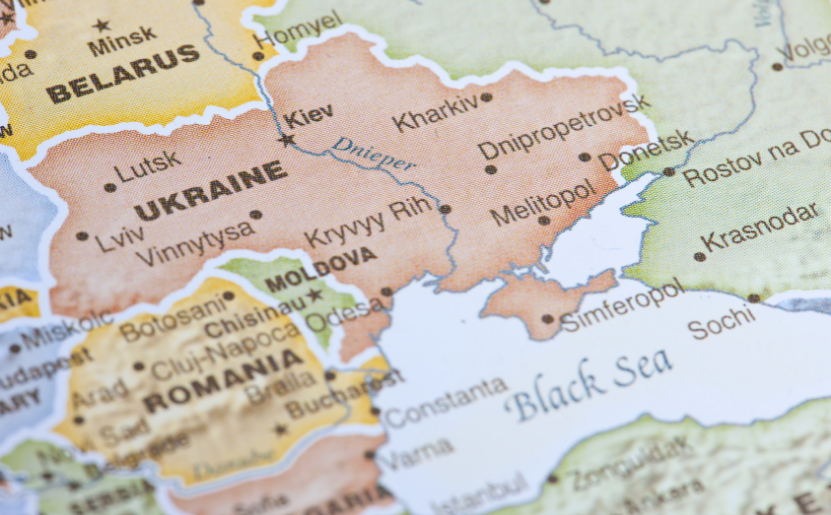
Resources and tools to provide students and educators with basic facts, support student well-being, and tools for media literacy.
Editor’s Note: The resources provided are intended to support educator and student understanding around the current conflict in Ukraine and media literacy around breaking news stories. The content provided on these websites may not represent the viewpoints and values of OSPI and are provided as a reference to start conversations.
Last week, Russia moved to war against Ukraine. Images of war can create stress and trauma. Many of our Washington families have connections to Ukraine, Russia, and the surrounding nations and may have strong feelings and responses to the current situation. We have provided social-emotional learning (SEL) and trauma-informed resources to help educators engage students and communities in ways that maintain a positive and safe learning environment.
This war is being covered by both traditional news organizations and by Ukrainians and Russians on social media sites like TikTok. The resources below are intended to provide students with basic facts about the situation and tools to support media literacy as students and educators evaluate the validity of the media they are consuming.
Resources for Teaching About the War in Ukraine
- EdWeek has five tips for talking with students about the Russia-Ukraine war.
- The New York Times provides lesson plans and resources for teaching about Ukraine.
- The Choices Program from Brown University — The Ukraine Crisis: Information, resources, and lessons to engage students in a comprehensive analysis of the lead-up to the Russian invasion.
- Origins — The Collapse of the Soviet Union: Provides a deeper understanding of the crisis in the Ukraine; teachers may want to provide more historical context. This source provides a brief overview of the end of the Cold War and the fall of the Soviet Union.
- C-SPAN Classroom: Educators can access video clips of reactions to the Russian invasion of Ukraine from various sources.
- AllSides or FlipSide: News aggregator sites dedicated to presenting current events from multiple perspectives.
- The Stanford History Education Group — Civic Online Reasoning: Resources to help students build and strengthen online information consumption skills.
- Getting Ukraine-Russia News From TikTok: Ways teachers can talk to students about what they’re hearing on social media and address their concerns.
- Newsela has a text set and accompanying elementary/middle/high school lesson guides with relevant articles, including NATO’s role in the situation and the Russian invasion itself.
- A team at UMass-Amherst has developed this “media literacy choice board” on the crisis, focusing on critical examination of articles and visual sources.
- The San Diego County Office of Education has suggestions for connecting the events in Ukraine to various themes and topics in social studies and supporting students in making sense of war and violence in age-appropriate ways.
- While not directly about the Ukraine conflict, iCivics just released “Convene the Council,” a game focused on foreign policy decision-making designed to help students think about the implications of various foreign policy tools.
- Facing History’s page on strategies for teaching current events includes several “go-to tools” to engage students’ heads, hearts, and consciences as they engage with current events.
- The New York City Department of Education has created the Conflict In Ukraine Resource Guide with a number of quality resources for teaching about the conflict.

Social and Emotional Learning Resources for Families & Educators to Support Students
For All Ages
- OSPI Mental Health Guidance
- Helping Your Students Cope With a Violent World
- How to Talk to Kids About Violence, Crime, and War
- Talking to Your Kids About War
For Elementary/Middle School Students
- Resilience in a Time of War: Tips for parents and teachers of elementary school students.
- Resilience in a Time of War: Tips for parents and teachers of middle school students.
Trauma-Informed Resources for School Systems
- National Child Traumatic Stress Network provides resources that can be filtered by topic or keyword and by audience with a focus on how adults can identify traumatic responses in young people and how to support them.
Podcasts, Articles, and Books on Russia & Ukraine
- Podcast from The Daily: Why Ukraine Matters to Putin
- Podcast from The Economist: War in the Ukraine-What Happens Next?
- Podcast from Political Gabfest: Putin’s War
- Book and Article by Masha Gessen: The Future is History: How Totalitarianism Reclaimed Russia
- Article from The Atlantic: Volodymyr Zelensky
Alignment with Social Studies Standards
Current events also provide an opportunity to address the Washington Social Studies standards. The Washington Social Studies standards include the following relevant connections:
- SSS1.5.1 — Evaluate the relevance of facts used in forming a position on an issue or event.
- SSS1.9–12.4 — Gather relevant information from multiple sources representing a wide range of views while using the origin, authority, structure, context, and corroborative value of the sources to guide the selection.
- SSS3.2.1 — Identify and explain a range of local, regional, and global problems, and some ways in which people are trying to address them.
- SSS4.2.2 — Evaluate a source by distinguishing between fact and opinion.
- C1.5.4 — Identify the beliefs, experiences, perspectives, and values that underlie their own and others’ points of view about civic issues.
- C3.6–8.1 — Analyze how societies have interacted with one another.
- G1.6–8.2 — Identify the location of places and regions in the world and understand their physical and cultural characteristics.
- G1.9–10.4 — Explain relationships between the locations of places and regions, and their political, cultural, and economic dynamics, using maps, satellite images, photographs, and other representations.
